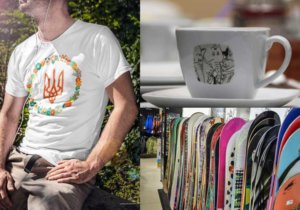Dye Sublimation Printing: History and How It Works

Dye sublimation printing requires heat to transfer dye onto paper, card, fabric and other similar materials. Apparel, photos, and even ceramic tiles make use of this method of printing. Dye sublimation printing got its name because it was first believed that the dye went through the solid and gas states without undergoing a liquid stage. When that proved to be incorrect, it was too late to change the name due to its popularity. The term dye-diffusion is the factually correct term.
History of Dye Sublimation Printing
The earliest evidence of this printing method traces back to 1957 in France. Noël de Plasse developed the method of printing for Sublistatis SA when he observed that dyes sublimate. The mass production of transfer papers used with the ribbons grew rapidly in the 1960s to the mid-1970s.
The Jet Propulsion Lab in the United States later invented the first ever computer printing machine that used the dye sublimation method. Wes Hoekstra led this project and became known as the father of computer image sublimation. Later works of Hoekstra include toner sublimation, but his continuous development of the then popular method led to millions and then billions of transfer papers sold to the public.
How It Works
Most dye-sublimation printers go through the same process. Unlike inkjet printers that put individual dots per color on paper, this produces a much more photo-realistic output. It takes a roll of transparent film then makes it go through a series of colored cellophane: red, blue, yellow, and gray.
The output of the printer occurs after the print head heats up. It passes over the transparent film which causes the vaporization of the dyes applied instantaneously on the film. When turned into their solid form, they appear glossy and without the individual dots that inkjet printers produce.
Uses
Unlike most computer printing methods, dye sublimation can be used on a variety of materials aside from paper. Though companies have since moved on from printing their paperwork with this method, many mass produced items still use it. Items such as skateboards, car hoods, floor mats and promotional posters are some of the best examples that you can observe today.
If you have an item made of nylon or polyester fabrics, then you can take advantage of the dye sublimation method. Items undergoing this printing method have more photo-realistic, vibrant colors. Many art styles take advantage of this method. Digital artists use this printing style to preserve how their art looks physically when exported from a computer.
